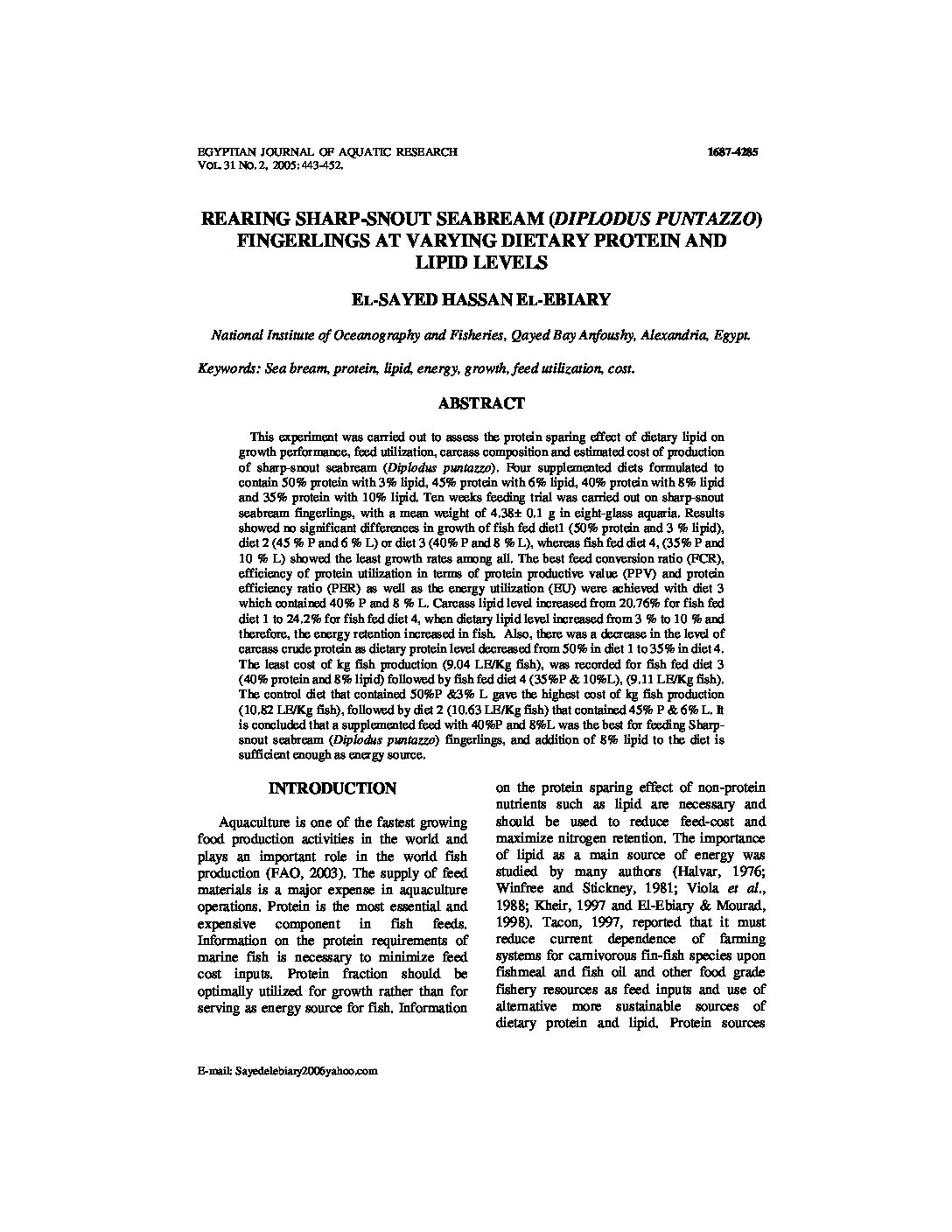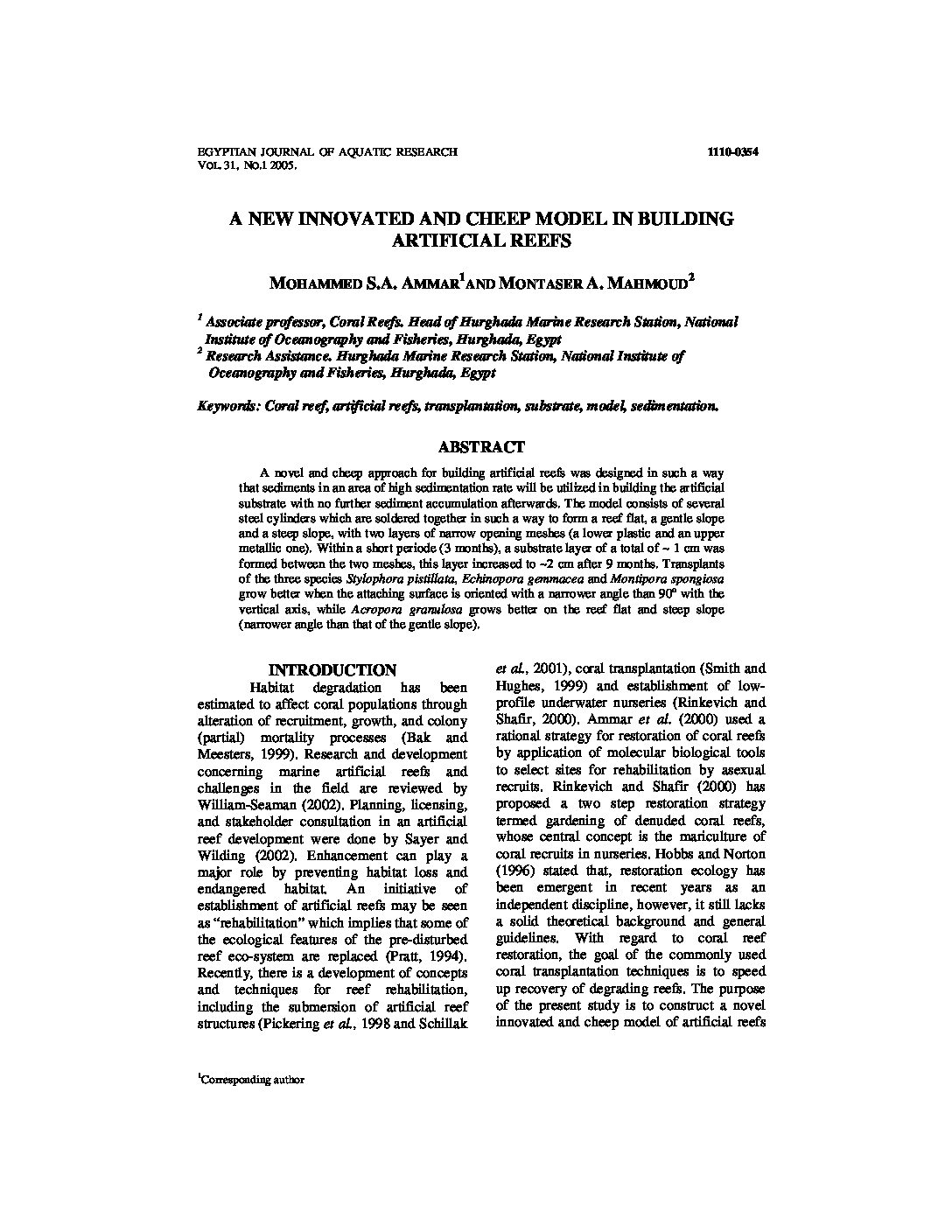Categories
vol-31REARING SHARP-SNOUT SEABREAM (DIPLODUS PUNTAZZO)
FINGERLINGS AT VARYING DIETARY PROTEIN AND
LIPID LEVELS
EL-SAYED HASSAN EL-EBIARY
National Institute of Oceanography and Fisheries, Qayed Bay Anfoushy, Alexandria, Egypt.
Keywords: Sea bream, protein, lipid, energy, growth, feed utilization, cost.
ABSTRACT
This experiment was carried out to assess the protein sparing effect of dietary lipid on
growth performance, feed utilization, carcass composition and estimated cost of production
of sharp-snout seabream (Diplodus puntazzo). Four supplemented diets formulated to
contain 50% protein with 3% lipid, 45% protein with 6% lipid, 40% protein with 8% lipid
and 35% protein with 10% lipid. Ten weeks feeding trial was carried out on sharp-snout
seabream fingerlings, with a mean weight of 4.38± 0.1 g in eight-glass aquaria. Results
showed no significant differences in growth of fish fed diet1 (50% protein and 3 % lipid),
diet 2 (45 % P and 6 % L) or diet 3 (40% P and 8 % L), whereas fish fed diet 4, (35% P and
10 % L) showed the least growth rates among all. The best feed conversion ratio (FCR),
efficiency of protein utilization in terms of protein productive value (PPV) and protein
efficiency ratio (PER) as well as the energy utilization (EU) were achieved with diet 3
which contained 40% P and 8 % L. Carcass lipid level increased from 20.76% for fish fed
diet 1 to 24.2% for fish fed diet 4, when dietary lipid level increased from 3 % to 10 % and
therefore, the energy retention increased in fish. Also, there was a decrease in the level of
carcass crude protein as dietary protein level decreased from 50% in diet 1 to 35% in diet 4.
The least cost of kg fish production (9.04 LE/Kg fish), was recorded for fish fed diet 3
(40% protein and 8% lipid) followed by fish fed diet 4 (35%P & 10%L), (9.11 LE/Kg fish).
The control diet that contained 50%P &3% L gave the highest cost of kg fish production
(10.82 LE/Kg fish), followed by diet 2 (10.63 LE/Kg fish) that contained 45% P & 6% L. It
is concluded that a supplemented feed with 40%P and 8%L was the best for feeding Sharpsnout seabream (Diplodus puntazzo) fingerlings, and addition of 8% lipid to the diet is
sufficient enough as energy source.







